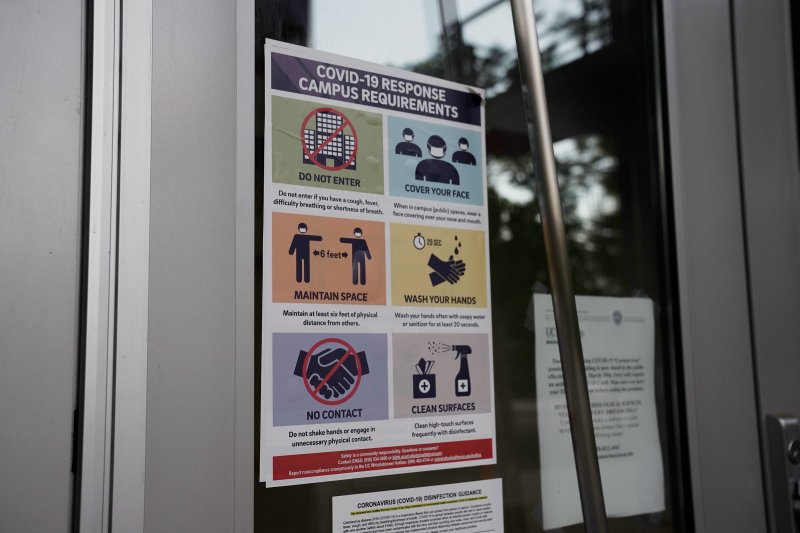Coronavirus News (181)
After Cruise Ships and Nursing Homes, Will Universities Be the Next COVID-19 Tinderboxes? Clusters of infection have been traced to college town bars popular with students. ......... A common misconception is that young people with COVID-19 don’t die and therefore college re-openings pose little risk. Sadly, this isn’t the case. COVID-19 deaths in the young are rare, but they happen. ......... One might imagine that the rapid, uncontained spread of a serious and poorly understood disease which is already killing students would cause universities all across America to put their re-opening plans on hold. Unfortunately, that’s not the case. ............ 60% are “going to open for business and bring all of their students back.” .......... this could be the largest-scale uncontrolled public health experiment America has ever undertaken, with students, staff, faculty, parents, and communities as the unwitting test subjects. No other nation has reopened schools and universities with the level of rampant community transmission we see in the U.S. today, or with so little coordination or guidance as to protective measures. ........... Safety measures proposed so far revolve around sanitation, masks, and physical distancing. These might be sufficient for a trip to the supermarket; for several reasons, they are likely to fail in the context of daily life at a university. ........... evidence suggests that when students and instructors spend extended time together in the classroom, even universal mask use and six feet of distancing may not be enough. .............. We now know that SARS-Cov-2, the virus that causes COVID-19, can linger in the air in the form of tiny droplets (aerosols) and can infect people as they breathe in. ............ In the absence of constant and efficient ventilation, viral particles can remain airborne for at least 3 hours. In most universities, opening all the windows and doors would be impractical or impossible, and air conditioning systems can waft recycled air over occupants for hours. .............. Beyond the classroom, colleges and universities are “congregate settings” that are known to create high risk for viral transmission, akin to nursing homes or cruise ships. The campus experience includes bringing students together in dormitories, dining halls, athletic training, parties, bars and clubs—gatherings that would risk becoming “superspreading events.” ............. The overarching message seems to be that just telling students not to do things and leaving it at that is not a reliable policy. ............ Even if they recover from the initial acute illness, infection with the novel coronavirus can have debilitating long-term consequences, including lung disease, heart problems, brain damage, and mental health problems. And we don’t yet know what other lingering effects the disease might have. ........... The highest risk of death will be among service and maintenance staff on campus—cleaners, bus drivers, food service employees, janitors, facilities managers and support staff—who wield little institutional power. .............. For the city where a campus is based, reopening will be like dropping a cruise ship into the center of town—and giving passengers free rein. Campus outbreaks cannot be hermetically sealed—they will inevitably cause a spike in community spread, affecting the city, state, and beyond. ........... Rather than leaving individual universities to piece together their own plans, Taiwan’s Ministry of Education produced a national strategy for college campuses. The strategy included an initial quarantine, frequent testing of all students, sanitation, masks, distancing, reduction of student density, cleaning of dorms twice daily with bleach, and allowing only one student per dining table. It also included mandatory quarantine for anyone exposed, and infection-number thresholds at which an entire university would shut down. With this huge array of protective measures on campus, Taiwanese universities were able to reopen successfully and see a total of just seven confirmed university-based cases by June 18, and only four new cases nationwide since then. ................ Aside from the safety protocols more rigorous than any we’ve seen proposed in the U.S., Taiwan’s universities had another advantage America’s don’t: a well-controlled epidemic with virtually no community transmission. To date, Taiwan has had only 451 cases and seven deaths. Not a single state in the U.S. has had anything like that level of success. .............. We understand the financial pressures that colleges and universities are facing. Some could risk bankruptcy without the revenue that reopening will generate. ............. The Trump administration is applying increasing pressure on the education system to reopen, hoping that Americans will grow numb to COVID-19 deaths.

No comments:
Post a Comment